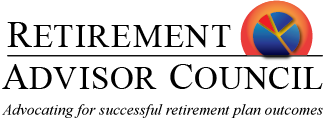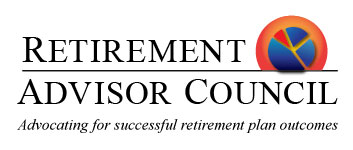Over the past quarter-century, plan sponsors, their advisors and retirement plan recordkeepers have invested hundreds of millions of dollars to educate the workforce about the benefits of participating in a 401(k) plan. However, despite these extensive efforts, the results have yet to substantially improve the retirement readiness of working Americans. Why?
One reason is that they have failed to consider the financial literacy needs of employees as well as their level of financial stress, and the two go hand in hand. If employees don't do basic budgeting, then they may never be financially healthy enough to be able to save money regularly and ramp up these contribution levels over time.
When creating an effective financial education curriculum for your plan participants, get back to basics: Make sure you meet the basic financial literacy needs of plan participants. Here are some key elements of financial literacy to include:
1 – Think and act long term - Like taking a healthy long-term approach to diet and exercise, financial success comes to those who incorporate healthy habits into their lifestyle rather than opt for the latest crash diet or gimmicky exercise fad. Teach participants how to create a long-term strategy in support of life-long goals as well as how to track monthly spending and income. This can help them free up money that could be channeled towards those big, potentially daunting goals.
By getting participants to focus on the big picture, you can help them resist such dangerous distractions as chasing hot-performing investments and overreacting to short-term market "noise."
2 – Time is on their side - Participants need to know that one of their most powerful allies is time. Starting at age 25 can make things so much easier than waiting a decade and having to play catch-up. For example, by saving $5,000 a year at an annual return of 6%, a 25-year-old could hypothetically accumulate $820,238 by age 65, a 40-year span of compound earnings. Even if the individual stopped contributing new money after age 35, he would have $69,858 after 10 years, which would then grow to $401,229 without adding a single dollar afterwards.
Compare this with the cost of waiting 10 years. A 35 year old contributing the same amount over the remaining 30 years to age 65 would accumulate $419,008. The cost of waiting the 10 years to begin to contribute to retirement savings is $401,229. Another way to look at this is that the person who contributed from age 25 to 35 would end up with more than $400,000 by saving just $50,000, while the one who saves $150,000 over the remaining 30 years would end up with about the same amount. Who would get more bang from their savings buck?
These types of illustrations can bring home to young plan participants how important it is to contribute now and not wait a moment longer.
3 – Understand investing basics - Participants don't need to be sophisticated investors, but they do need to know the basics. They should be comfortable with asset allocation, comparing investment performance with the right benchmark, knowing the difference between actively managed and passive investments, understanding mutual fund expense ratios, and emphasizing long-term performance over short-term returns.
By helping participants understand the basic building blocks of investing, you can help to empower them to make their own investment decisions and to be able to track their fund and portfolio performance against the relevant benchmarks, rebalance their asset allocation as needed from time to time, and monitor their progress towards their retirement savings goals.
4 – Beware the pitfalls of plan loans and in-service withdrawals - One important area where we need to do a better job is in educating participants about the dangers and costs of plan loans and in-service withdrawals as well as the long-term costs of cashing out of a plan rather than rolling it over and keeping it in a tax-deferred account when they leave a job.
The pitfalls include opportunity costs of lost potential earnings when the money is absent from the account and not generating compound returns as well as potential taxes and penalties if permanently withdrawn or owed when an employee leaves a place of employment.
The costs to our society of having a generation of workers who aren't financially ready to retire when they arrive at retirement age could be devastating. The costs to individuals who can't afford to retire or who have to make serious financial sacrifices through retirement can be heartbreaking. We need to work together to make sure that doesn't happen. We simply need to do a better job educating our plan participants.
Contributors: Charlie Avallone, Jason Chepenik, Mike Kane, Deb Rubin, Sharon Schmid, Jamie Worrell







































